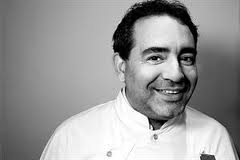Once of the unmissable experience people who travel to Argentina would like to try is a good steak cooked on the grill. We have all heard words like parrilla or asado and having an Argentine steak, cooked in Argentina, by an Argentine chef and maybe paired with a Argentine malbec is something any meat lover would be dreaming of!
Choosing the restaurant would probably be the first challenge. As you will see, there is no shortage of parrilla restaurants in Buenos Aires. A bit of clarification first. Exactly as the word asado has several meanings, the word parilla can refer to the actual grill used to cook meat or a restaurant that serves asado. Well, let’s say that Steaks by Luis is fully booked tonight and that you cannot wait, that’s very unfortunate but you will have to go somewhere else (few restaurants reviews on that blog if you are looking for adives!). Once there, comes the next challenge: ordering.
You will quickly notice how extensive are usually the menus. Steak is actually a very generalized term. While it applies to beef there are so many different parts of the cow that when you’re faced with the actual decision of what kind of steak you’re going to have it can be a bit daunting. You will also very quickly notice that the menu is also in Spanish, which somehow can make your ordering even more challenging.
Here are the translations of few terms you will surely face. Never too good to be in front of your beloved one, going mute and looking like you are trying to read the New York Times in Chinese. You can only ask the waiter to come back so many times!
-
Bife de Chorizo – Sirloin Steaks. Typical Argentine steaks. But nothing to do with the sausage called chorizo too!
-
Ojo de Bife- Ribeye
-
Bife de Costilla- T-Bone Steak
-
Bife de Lomo- Tenderloin
-
Matambre- Flank Steak
-
Cuadril- Rump Roast
-
Entraña – Skirt Steak.
-
Vacio – Flank Steak
-
Bife Angosto – Porterhouse or Striploin Steak.
-
Cuadril– Rump Steak. Commonly used in sandwiches.
-
Tira de asado: short ribs
While there are plenty of other parts to the cow this very generally covers the common cuts available at all parrillas. For a more extensive list have a look here.
Now that you have ordered your preferred cut with success (congratulations!), the next thing you will be asked is how you want it. Because no matter what cut you have ordered, you will be asked anyway. Don’t go mute there either, you nearly made it! And good luck to explain your preferred cooking point with your hands! Here in Argentina you have three choices: jugoso, a punto and cocido.
1. Jugoso (pronounced “hoo-GO-so”) literally translates to juicy which for an english speaker would translate to rare.
2. A punto (pronounced “ah-POON-tow”) would be similar to a medium in English
3. Cocido (pronounced “coh-SEE-doh”), how most Argentines prefer their bifes (steaks), is the equivalent of well done
Something to note about cooking points in Argentina is that they are compared on a scale that starts much closer to well done than anywhere else. What does that mean exactly? Well, it means that if you like your steak medium and you order a punto you’re most likely going to get a steak with little to no pink in the middle because on an Argentinian scale that’s a medium. Your best bet if you like some pink is to go a little less cooked than you prefer and if it’s underdone you can send it back and have them cook it a minute or two more. However, I wouldn’t suggest ordering your steak blue or vuelta y vuelta as it’s called here unless you’re looking to get funny looks all around. (Side note: if you happen to be at a place that caters more towards tourists you might have better luck at actually getting a steak cooked how you ordered it).
Now you can enjoy the easy part: waiting on your food sipping on wine. Buen provecho!






























